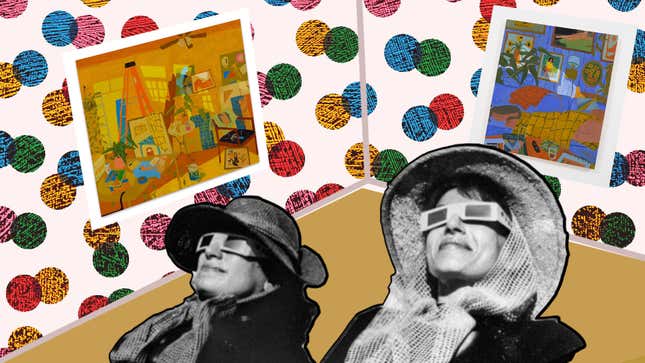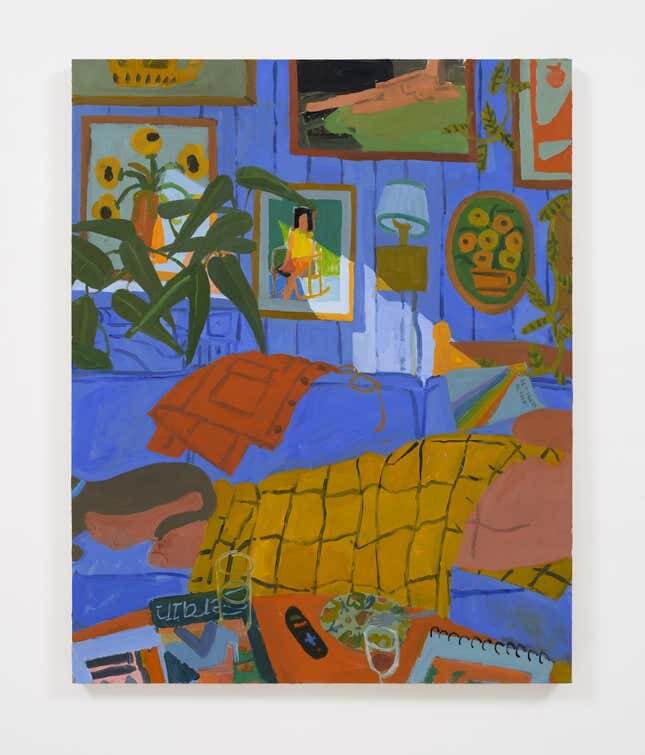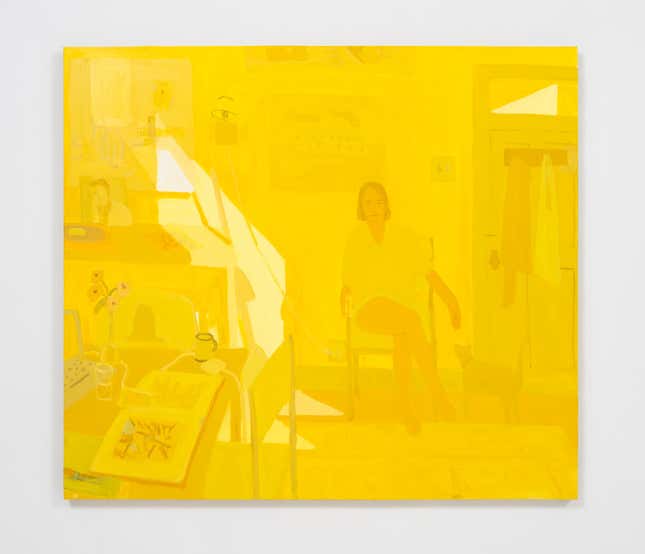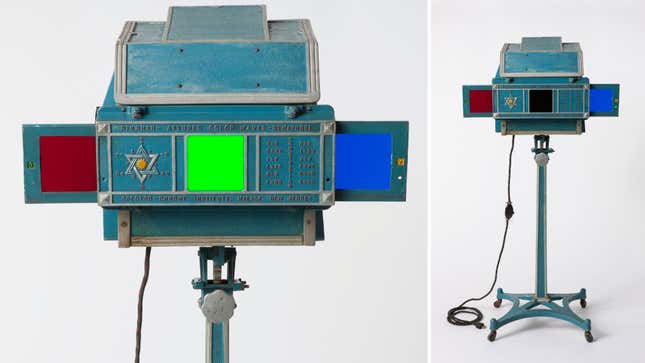Bright Colors Might Not Cure You, But the Pseudoscience Is Enough to Inspire a Vivid New Art Show
Sophie Treppendahl’s curiosity and skepticism around the new-age practice known as chromotherapy helped produce works "rooted in the emotional power of color."
Entertainment
Illustration: Getty Images/Sophie Treppendahl
Everything I’m looking at inside the Jack Hanley Gallery in TriBeCa is pink. In front of me hangs a pink painting, which is beside another painting that is a slightly deeper shade of pink. Each piece of artwork at Sophie Treppendahl’s latest show “Chromotherapy” is awash with a pinkish-magenta hue. The walls in the gallery are dark pink. The front desk attendant is wearing a pink shirt and has pink hair. Her skin even glows pink. So does mine. That’s because I’m wearing magenta GloFX sunglasses—one shade of many colored glasses offered by the gallery—which promise to promote “feelings of emotional balance and internal regulation.” In the sense that experiencing the world in monochrome allows for a calm dissociation from what is actually happening in the world, they’re sort of working. While that isn’t much of an endorsement, they are certainly fun!
That tension, between the promise of relief and actually feeling relieved, is one of the ideas at the center of Treppendahl’s show. The title of which is in reference to a new-age (though centuries-old) pseudoscientific practice that believes different wavelengths along the color spectrum can heal bodily and mental ailments by either exposing the affected area to the light or viewing the world through a colored lens. If that sentence made you furrow your brow, don’t worry, it did the same for Treppendahl. But that skepticism didn’t stop her from exploring the multicolored mystical realm known as chromotherapy.
“Honestly I sort of stumbled upon it,” Treppendahl told Jezebel. In the basement of Jack Hanley’s are miniature dioramas of rooms—recreations of the ones seen in many of her paintings. While looking online for colored flashlights to shine on these miniatures Treppendahl came across chromotherapy torches, small colored flashlights with uncut crystals at the tip that promise to alleviate problem areas on the body that their light touches.
“I couldn’t stop Googling and I got obsessed, ordered a million books, and fell down all of these forums,” Treppendahl said. “There’s a retreat in Greece led by this woman that I want to go on, but I’m worried I might actually convert.” Although she was about two-thirds of the way done with the work (paintings, encaustics, and miniatures) for this particular show when she learned about chromotherapy, it helped her mentally frame and complete the rest of it, even literally finding its way into some of the pieces.
-

-

-

-

-

-

-

-

-

-

-

-

-

-

-

-

-

-

-

-

-

-

-

-

-

-

-

-

-

-

-

-

-

-

-

-

-

-

-

-











































